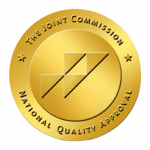There are many things that can trigger a person who has gone through a traumatic experience or is struggling with an addiction. Specific locations, people, and the things people say can all bring back memories from past trauma. Causing these negative thoughts to rush back in like wildfire. Oftentimes, depending on the show you are watching, you will see a “trigger warning” before starting a show with sensitive or explicit material. However, the question lies, what is the impact of triggering material on television, and can it affect your mental well-being?
What is a Trigger Warnings
Before starting a show on television that contains any explicit content a content warning, advisory warning, or trigger warning will show across the screen. This contains words such as:
- “Warning: viewers discretion is advised.”
- “The following episode contains graphic depictions of…”
- “The following program is rated TV-MA and contains…”
- “Content warning: the following video contains material that may be harmful or traumatizing to some audiences.”
Advisory warnings warn parents before shows and films that the content may not be suitable for children. Content warnings tell viewers that the content they are about to watch may be offensive or graphic. Trigger warnings caution individuals who are suffering from traumatic symptoms that the content shown may affect them in a negative way. Bringing up past experiences and emotions.
The word “trigger” comes from a symptom experienced with people suffering from PTSD. These feelings can include flashbacks, nightmares, and/ or panic attacks. Someone struggling with addiction can also experience triggers when watching shows that portray drug and alcohol abuse. Thus, threatening the potential of relapse.
Do Trigger Warnings Work
Although trigger warnings are supposed to warn and protect those who are sensitive to specific content, can these warnings actually have a negative impact? There is little research on the impact of trigger warnings on individuals suffering from trauma, however, these warnings have been shown to give individuals extreme stress and anxiety when they flash across the screen.
Some individuals living with PTSD actually use turning on the television as a coping strategy, especially with children. However, with the amount of triggering material now displayed across our television screens, it can actually make matter worse. Children and young adults have curious minds, which make them much more compelled to continue watching the content when there is a warning beforehand. For example, when someone tells you not to look but you can’t help yourself.

What is Triggering Material on Television
Triggering or sensitive material means any content shown on TV or films that causes negative thoughts and feelings. Some of the content that can be triggering for individuals who have gone through trauma or are sensitive to specific topics include:
- Sexual abuse/ assault
- Self-harm
- Violence
- Eating disorders
- Bullying
- Drug use/ alcohol use
- Child abuse
- Animal abuse
This list goes on. Triggers that affect one person may not affect the next. Rather than watching a show that may have triggering content, read reviews before investing your time. Try bringing it up with a loved one who can let you know beforehand if the content is appropriate for your situation. Talking to a therapist or group counselor can also help you understand why these things are affecting you in a debilitating way.
Talk to Some Today
If you or someone you love is struggling to cope with a mental illness or addiction and is in need of help, contact the Harm Reduction Center. At HARC, we are not only a treatment center, helping those suffering from addiction, but we offer all services for individuals struggling with mental health. According to the National Institute of Mental Health, one in five U.S. adults are living with a mental illness (52.9 million in 2020).
Talking to professionals and finding a community that promotes positivity can help you maintain your mental health and break free from your struggles. Contact us today for more information.














